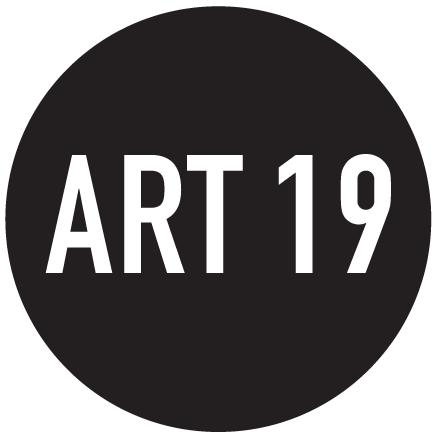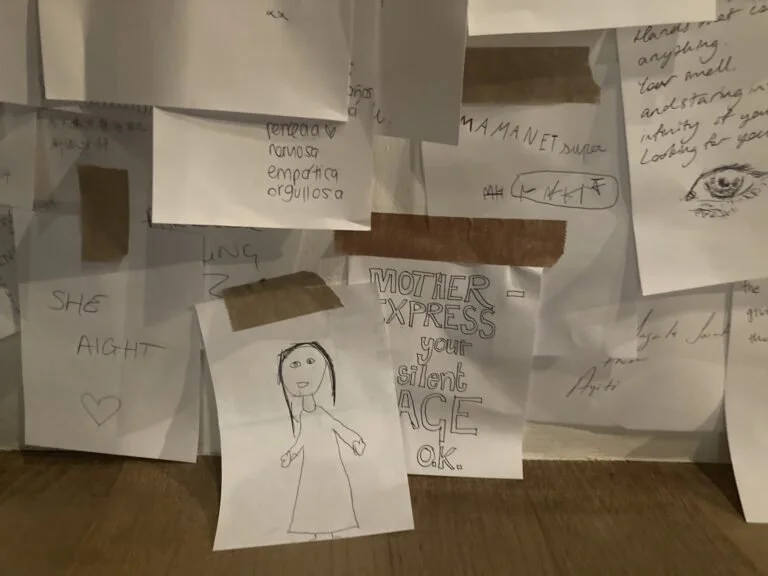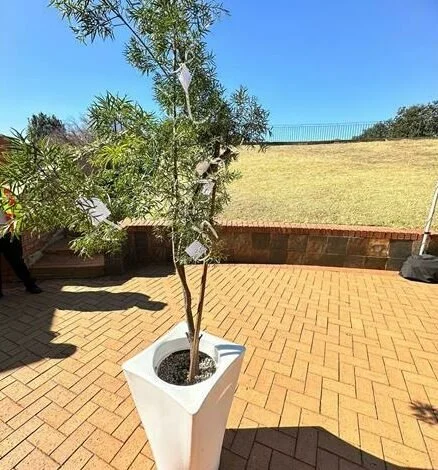Showcasing her expertise across various media, the exhibition of Shilpa Gupta ,"I did not tell you what I saw, but only what I dreamt" (MMOCA, June 28, 2024 – January 14, 2025), features her interactive sound installations, sculptures, photographs, and drawings. A conceptual artist, Gupta’s distinctive approach challenges viewers to reflect on how information shapes our perception of reality in today's global society. Guiding Gupta's art is her research into the power of language, examining how large-scale institutions and invisible structures adopt it to define and enforce societal norms. She also considers language as a tool of resistance, empowering individuals to create new possibilities and challenge existing power structures. She applies these insights to explore issues surrounding the enforcement of national borders, cultural and social identity, religious and ethnic persecution, and the limits of free speech.
Read MoreNEWS
Arts icon and activist Yoko Ono was awarded the 64th annual Edward MacDowell Medal on Sunday for her “ground-breaking, distinctively inventive, and enormously influential” career as an interdisciplinary artist over seven decades. “There has never been anyone like her; there has never been work like hers … She has rewarded eyes, provoked thought, inspired feminists, and defended migrants through works of a wide-ranging imagination. Enduringly fresh and pertinent, her uniquely powerful oeuvre speaks to our own times, so sorely needful of her leitmotif: Peace,” author and board Chairman Nell Painter told an estimated 1,100 guests at the MacDowell.
Read MoreAt a glance, Gerhard Richter’s images of candles look like blurred photographs. In truth, they are meticulously crafted paintings that manage to recreate the effect of a camera shooting its subject slightly out of focus. Richter’s candles hover between reality and illusion, objectivity and subjectivity, not unlike how the artist spent his youth in East Germany, wedged between capitalist Europe and communist Russia. [...] Candles have come to occupy an especially important place in Richter’s oeuvre, with fellow German artist and art historian Hubertus Butin going as far to say “no still-life motif has been such an object of fascination.” As Richter himself explained in a collection of writings, interviews, and letters: “Candles had always been an important symbol for [East Germany], as a silent protest against the regime… it was a strange feeling to see that a small picture of candles was turning into something completely different."
Read MoreTwo in one, that’s what the Aix-en-Provence Festival is offering this year. Twice the pleasure; "The Great Yes, The Great No" is a lot, but it’s good. Relocated to LUMA Arles (from July 07 to 10, 2024), the chamber opera created by William Kentridge takes advantage of the artist’s skills as a visual artist to offer not only a lyrical performance, but also a vast exhibition, all in two of the venues of the Parc des Ateliers in Arles. The exhibition, entitled Je n attends plus (I don’t wait any longer), features several variations on a powerful theme: the failure of twentieth-century utopias and the roles played by artists in this context.
Read MoreSeveral of the Luma's shows have the feel of a blockbuster, but perhaps none more so than William Kentridge’s "Je n’attends plus" (I Am Not Waiting Any Longer). This exhibition is an accompaniment to the South African artist’s new opera, "The Great Yes, The Great No", debuted at Luma Arles earlier this month, which puts a fantastical twist on a true story: that of a voyage from nearby Marseilles to Martinique in 1941, taken by artists and thinkers—Wifredo Lam and André Breton among them—looking to escape the ravages of war. Kentridge’s reimagining places other avant-garde artists, such as Frida Kahlo, pioneers of the anti-colonial Négritude movement, such as Aimé Cesare and the Nardal sisters, and other important figures of the time on this journey—their faces appearing as cardboard masks. "I Am Not Waiting Any Longer" takes visitors to the heart of his process: there are research materials, such as photographs taken on the actual crossing; cardboard masks scattered across a wall; and intricate maquettes of the set.
Read MoreYoko Ono’s retrospective, "Music of the Mind" (Tate, until 1st September 2024), feels like a regressive rollercoaster. Partly thanks to the nostalgic nature of the content (including an irresistible array of charming doodles), its formally biographical curation (confirming that her most important work really did happen when she was still single), and the force of the persona that is Yoko — but also thanks to Ono’s continual prompts for participation, which impose not only a physical but also a social and emotional toll on the visitor. Throughout the galleries, we encounter a series of procedures. Ono outlines instructions that are vague but succinct: Hammer the nail. Trace your shadow. Write your thoughts about your mum and stick it to the wall. What’s most interesting is how the audience — when given an inch — takes a mile.
Read MoreWilliam Kentridge’s hyped "The Great Yes, The Great No" opened in Arles on Sunday as part of the Aix-en-Provence Festival [...] His installation work is intricate and theatrical, multi-layered and profound. [...] "The Great Yes, The Great No" is a work in progress. The fundamental idea, for all its complexity, is engaging. Intellectual exiles travelled aboard the Capitaine Paul-Lemerle from Marseille to Martinique in 1941, fleeing Vichy France. They included Surrealist André Breton, anthropologist Claude Lévi-Strauss, communist novelist Victor Serge, Cuban artist Wifredo Lam and author Anna Seghers. Kentridge has mythical afterworld ferryman Charon captain the ship and tosses in anticolonialist figureheads such as Aimé and Suzanne Césaire, sisters Jane and Paulette Nardal and Frantz Fanon.
Read MoreThe collective exhibition "Cosmography" (Galerie Templon, New York, on view until August 1, 2024), titled after the study of how researchers map the general features of the universe, will comprise of multi-media works probing into the intersection of mythology, history and mathematics. [...] Japanese performance and installation artist Chiharu Shiota takes a more abstracted approach to showcase how humanity is intrinsically linked to the stars above through a pungent red watercolor composition showcasing a lone stick figure tied to a blob of red matter. “These artists explore a surrealist, cosmic vision of the future,” wrote Templon, “one that is ripe with personal histories and occasions for change.
Read MoreThe installation ‘Spread Peace: Wish Tree by Yoko Ono’ [...] was led by the Japan Institute of Portland Japanese Garden, an American non-profit organisation and cultural institution based in Portland, Oregon. [...] The Wish Tree showed simultaneously from June –10 at Portland Japanese Garden in the US, Keihanna Commemorative Garden in Japan, Kokoro no Niwa in Chile, and our Emmarentia-based gardens. This collaboration expanded on the "Yoko Ono: Peace is Power" exhibition showing at the Nobel Peace Centre in Oslo, Norway. Wish Tree invited guests to reflect and write their wishes for peace, which were then tied to the tree’s branches. Over time, the Wish Trees become adorned with these hopeful missives, evolving into a visual representation of the community’s collective aspirations for peace in our time.
Read MoreUntil January 12, William Kentridge presents "Je n'attends plus" at Mécanique Générale in Arles. This abundant and generous exhibition accompanies and extends "The Great Yes, The Great No", his new world creation presented from July 7 to 10, 2024 at the Parc des Ateliers as part of a partnership between Luma Arles and the Festival d'Aix-en-Provence. "Je n'attends plus" takes up half of the space at the Mécanique Générale shared with the exhibition "Quand les images apprennent à parler" by Fondation A pour Les Rencontres Arles 2024.
Read MoreNew exhibition at the Gerhard Richter Archive in Dresden shows works from the archive's own collection and on loan, including two new editions. Insights into the artist's multifaceted creative process. With a new exhibition, the Gerhard Richter Archive in Dresden is providing a rare insight into the artist's creative process at the Albertinum until September 8. According to director Dietmar Elger, the exhibition will mainly feature material and works from the archive's own collection, supplemented by loans. "They are almost all graphic works", which Richter created as samples, variations and drawings, for example, he said at the opening on Friday. Also on display are two brand new editions that the artist made together with the archive in 2023 and which are being sold for the benefit of acquisitions and exhibitions.
Read MoreTanya Bonakdar Gallery is pleased to present "The Objects We Choose", curated by Pedro Alonzo, an exhibition featuring important work by Meschac Gaba, Ximena Garrido-Lecca, Shilpa Gupta, Brian Jungen, Kimsooja, Laura Lima, Patrick Martinez, Moris, Rivane Neuenschwander, Clarissa Tossin, Marie Watt, and Héctor Zamora. As consumers who navigate existence through a continuous process of selecting one thing over another, we know that objects have meaning that transcends their utilitarian and material value. The items that surround us, some of which we choose to use or wear, say a lot about us.
Read More











